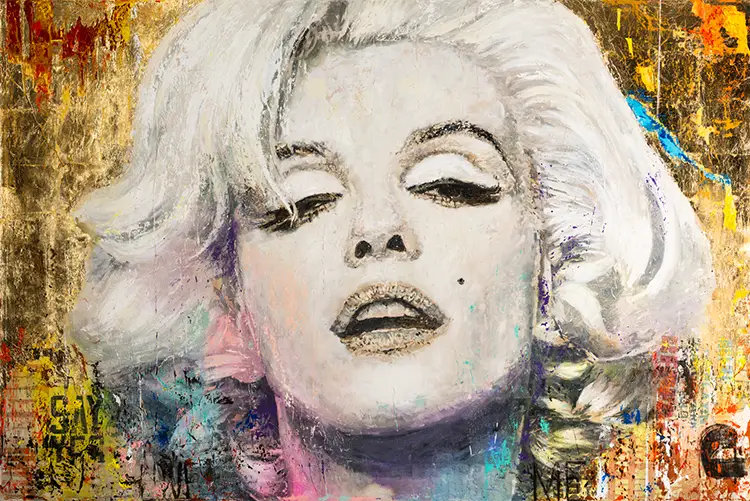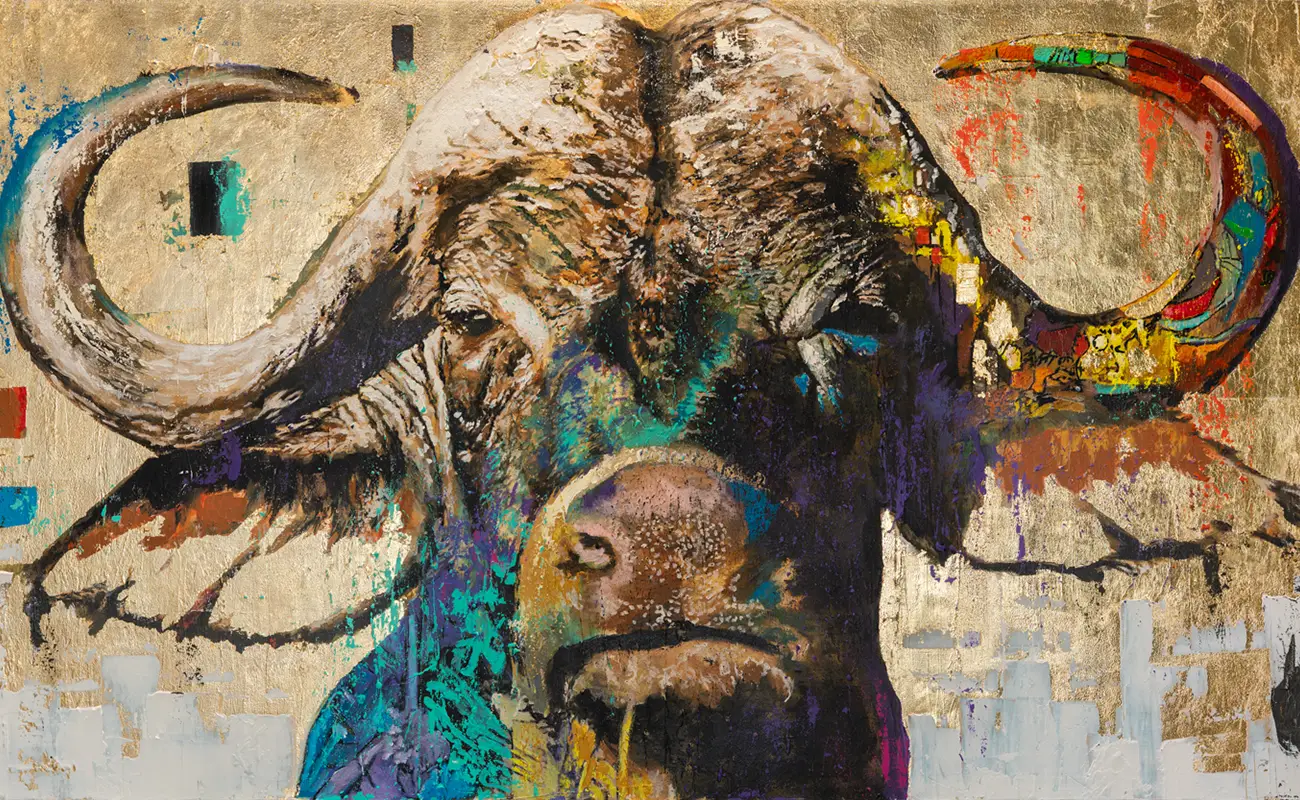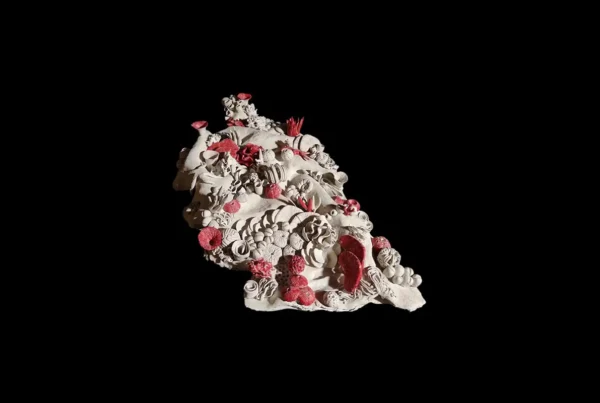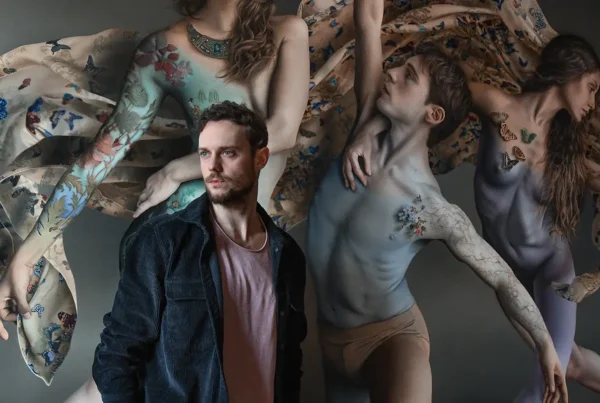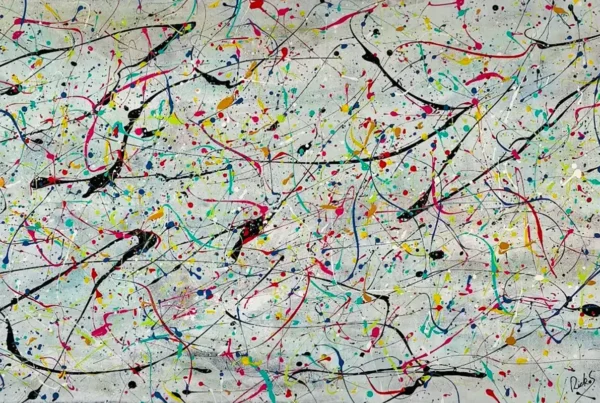“Each brushstroke is guided by intuition, and I dedicate countless hours to transcend representation and unveil the hidden soul of my subjects.”
From Maracaibo to the Mountain: A Life Framed by Contrast and Devotion
Gerardo Labarca’s journey begins in Maracaibo, Venezuela, where a vivid cultural heritage and emotional resilience formed the roots of his creative impulse. At 21, he made the pivotal decision to move to Montreal, a city that would eventually evolve into his second homeland and the backdrop for his transformative artistic practice. For years, Labarca pursued a career in the world of gourmet restaurants, where his dedication to aesthetics and high standards of presentation laid the groundwork for his later immersion in visual arts. These formative experiences, coupled with the emotional complexity of life as an immigrant, now echo through his paintings, which strive not only for technical precision but also for emotional clarity.
Despite early recognition for his drawing abilities, Labarca did not fully commit to painting until he was 47—a bold pivot that speaks volumes about his inner drive and late-blooming commitment to self-expression. His professional background in fine dining instilled in him a reverence for detail and a respect for discipline, which now translate into the countless hours he invests in each canvas. This transition was not impulsive but rather the culmination of decades spent observing form, texture, and emotion in the world around him. Through his work, he seeks to capture more than likeness; he aims to extract the very spirit of his subjects.
The migration from Venezuela to Canada is not explicitly documented in his artwork, but it pulses beneath the surface of each piece. His canvases whisper stories of adaptation, perseverance, and identity redefined. Labarca paints not to recount memories but to express the emotional truths those memories have left behind. In this sense, every work becomes a quiet assertion of presence—an affirmation that art can hold what words sometimes cannot. His practice is a deeply personal yet universally resonant exploration of belonging and transformation.
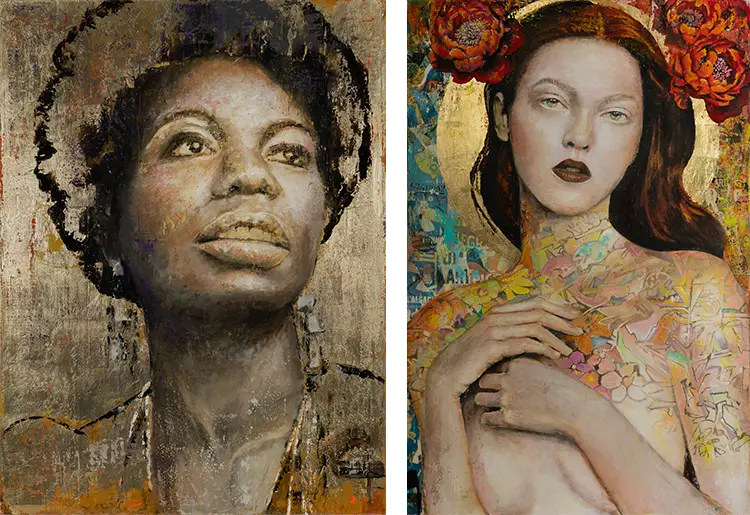
Gerardo Labarca: Anchoring Emotion in Paint and Texture
Labarca’s work is rooted in a figurative style that celebrates realism while pursuing the intangible qualities of character and presence. He is known for painting large-scale portraits, often of women, whose gazes command attention and stir introspection. These faces, with their depth and strength, are rendered with unwavering fidelity, but they are never merely anatomical studies. Through subtle expression and eye contact, Labarca captures a silent narrative that invites viewers to linger. Male figures and wildlife also appear in his oeuvre, contributing to a broader dialogue about human emotion and the fragile harmony between species.
What sets his compositions apart is the interplay between sharply detailed characters and abstract, richly textured backgrounds. Surrounding his subjects with a blend of mixed media, including collage and structural mortar, Labarca constructs a visual environment that serves both aesthetic and symbolic functions. These backgrounds, though abstract, are not arbitrary—they become atmospheric extensions of the person or animal at the center, suggesting an emotional or spiritual context. The contrast between clarity and abstraction introduces a dynamic tension that breathes life into the canvas, giving viewers space to interpret.
Beyond the human form, Labarca has a pronounced commitment to portraying wildlife, using his art as a medium for environmental awareness. His animal portraits serve as quiet acts of advocacy, calling attention to the vulnerability of non-human life in an increasingly industrialized world. The elegance and dignity with which he paints these creatures underscore a fundamental belief: that all life, whether human or animal, deserves to be seen, respected, and protected. His work asks viewers not just to look, but to feel—and ultimately, to care.
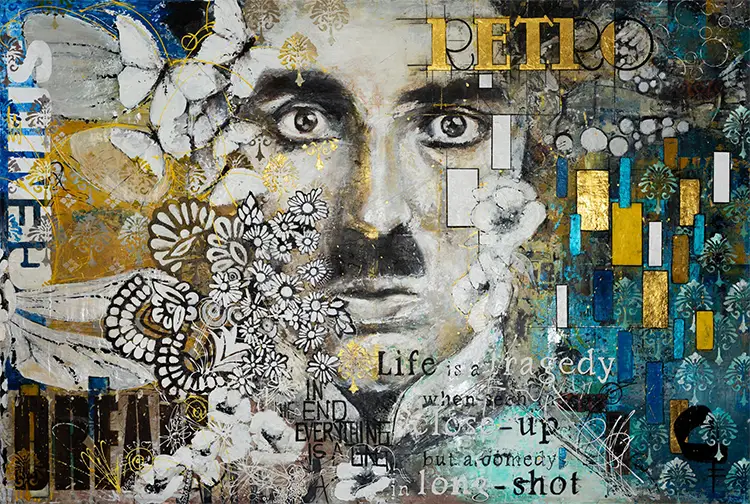
A Studio in the Woods: Nature, Ritual, and Creative Solitude
Labarca’s studio is not a typical urban loft or gallery-adjacent workspace—it is a sanctuary nestled within a forested mountain landscape far from the distractions of city life. There, surrounded by dense trees, he has created a haven that echoes the lushness of his Venezuelan roots. His home is alive with tropical plants, a bird, fish, and his dog Cassim—all of whom contribute to an atmosphere of calm and creative focus. This setting is not merely aesthetic; it is intentional. The long, sun-starved Canadian winters inspired him to recreate an environment that speaks to his sensory memory of warmth and vibrancy.
His creative process begins early in the morning when the world is quiet and his mind is clear. In this cocoon of silence and green, he loses himself in painting, free from external interruptions. Artificial light mimics tropical sunlight, enabling a flow of energy that connects past and present, homeland and adopted country. Every object in the space seems to have a purpose, either to comfort or to inspire. This intentional control over his surroundings reflects the discipline that also guides his brushstrokes. His workspace is not just where he paints—it is where he recharges, reflects, and reconciles dual identities.
The materials he chooses are as expressive as his subjects. Acrylic paint, favored for its quick drying properties, allows him to work instinctively and in layers. He integrates metallic leaf into many pieces, adding an unexpected shimmer that shifts under changing light. Heavy structural mortar adds dimension and tactility, transforming his canvases into three-dimensional experiences. These materials do more than build a surface—they construct a dialogue between solidity and fluidity, between permanence and motion. The result is a visual language uniquely his own, one where each texture contributes to meaning and emotion.
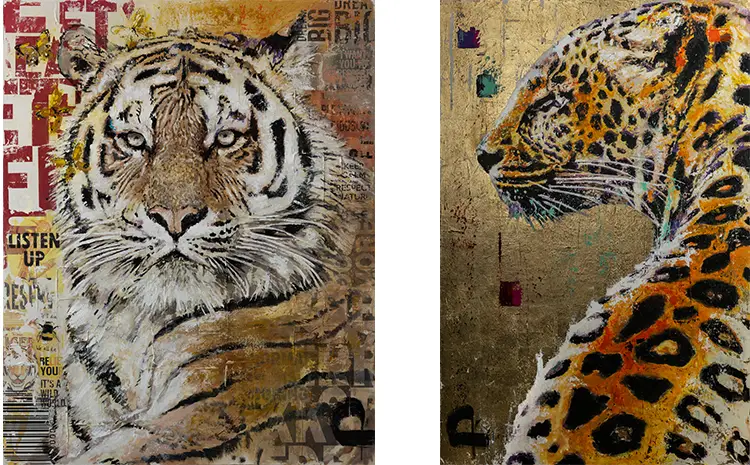
Gerardo Labarca: Turning Art into Collective Empowerment
Among Labarca’s most defining projects is a piece titled CHAPLIN, a personal milestone that marked his transition from restaurateur to full-time visual artist. Centered around the expressive face of Charlie Chaplin, this large-scale work—measuring 72 by 48 inches—features a stark white background with shades of gray and black to heighten the subject’s emotional impact. What began as an experimental portrait quickly evolved into a turning point. Immersed in the character of Chaplin, whose cinematic creativity he deeply admires, Labarca layered text, imagery, and mixed materials to narrate his own story of reinvention. The painting remains part of his private collection, a touchstone of courage and transformation.
His work, however, extends beyond personal expression. Labarca is the founder of ONE FOR ALL – Art, a collective designed to support emerging and underrepresented artists. This initiative is born out of his recognition that the path into the art world is often fraught with barriers—something he was fortunate to overcome early in his own career. ONE FOR ALL offers artists not only a platform for exposure but also a supportive community that affirms the value of every creative voice. Through this project, Labarca becomes not just an artist, but a facilitator of visibility and growth for others.
The group’s first major endeavor is a summer exhibition at Perkins Gallery, providing a professional venue for many participants to showcase their work publicly for the first time. This event symbolizes more than just an exhibition—it is the embodiment of Labarca’s belief that art thrives in community and that visibility can change lives. With this initiative, he redefines success not as individual acclaim but as shared opportunity. His commitment to fostering a culture of artistic solidarity transforms his practice into a broader mission: to ensure that no artist journeys alone.
